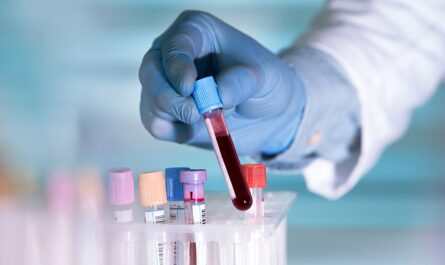Hereditary angioedema (HAE) is a rare genetic disorder characterized by sudden episodes of severe swelling in various body parts including hands, feet, abdominal area, face or airway. The swelling may last for a couple of days before resolving on its own. HAE is caused due to the deficiency of C1-inhibitor, a protein that regulates several biological pathways of the body. Approximately one in 50,000 individuals are affected with HAE globally. The symptoms usually start appearing during teenage or early adulthood but the condition is usually inherited from the parents.
Causes of Hereditary Angioedema
There are two types of HAE based on the inheritance pattern – HAE type I and II. In HAE type I, which accounts for 80-85% of HAE cases, there are decreased levels of functioning C1-inhibitor protein due to genetic mutations. In HAE type II, the C1-inhibitor protein is synthesized normally but functions abnormally or poorly. These changes in the C1-inhibitor lead to excessive and uncontrolled activation of the vasodilator pathway causing recurrent episodes of swelling. Exposure to minor trauma, stress, infections or certain medications can often trigger the attacks in Hereditary Angioedema patients. The condition is inherited in an autosomal dominant manner.
Symptoms of Hereditary Angioedema
The most common symptom of HAE is episodes of swelling in various body parts including hands, feet, limbs, face, bowel or airway. The swellings can vary in size – from that of a large egg to a grapefruit. The facial swellings or tongue swelling can be severe and potentially life threatening if airway gets blocked. Abdominal pain due to intestinal swelling mimics acute abdomen. Other symptoms may include nausea, vomiting, diarrhea and bloating. The swellings appear very quickly over hours and subside gradually over days depending on severity. Pain or itching may accompany the swellings. Episodes may occur spontaneously or can be provoked by certain triggers. Without proper treatment, the attacks may be prolonged and severe.
Diagnosis of Hereditary Angioedema
There is no single confirmatory diagnostic test for HAE. Diagnosis relies on detailed medical history, family history evaluation and specialized laboratory tests. If the patient has a family history of angioedema, diagnosis is much easier. However, in patients without an obvious family history, laboratory tests are required to measure the levels and function of C1-inhibitor protein. These include C4, C1-esterase inhibitor, and C1-INH antigenic and functional assays. A defective or deficient C1-INH points to the diagnosis of HAE. In HAE type II, C1-INH levels will be normal or elevated but it will be non-functional. Genetic testing can also confirm the diagnosis if a known mutation runs in the family. Response to standard angioedema treatments also helps in diagnosis. Distinguishing it from acquired angioedema is also important.
Management of Hereditary Angioedema
There is no cure for HAE, however, proper long-term management can help prevent attacks and reduce severity and duration of swellings if they occur. The goal of treatment is to avoid triggers, treat acute attacks and prevent future attacks. Acute attacks are usually treated with intravenous administered C1-INH concentrates like Cinryze, plasma-derived C1 inhibitor like Berinert or a bradykinin receptor antagonist like Firazyr. These significantly reduce symptoms within hours. Short term use of antifibrinolytic agents like tranexamic acid is also useful. Preventing long term attacks can be achieved by using prophylactic drugs like a C1-INH concentrate or a bradykinin B2 receptor antagonist like lanadelumab or icatibant. These need to be administered at regular intervals by self or caregiver injections. Patient education and maintaining quality of life is also important in the management of HAE.



